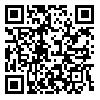دوره 14، شماره 4 - ( 5-1402 )
جلد 14 شماره 4 صفحات 518-511 |
برگشت به فهرست نسخه ها
Download citation:
BibTeX | RIS | EndNote | Medlars | ProCite | Reference Manager | RefWorks
Send citation to:



BibTeX | RIS | EndNote | Medlars | ProCite | Reference Manager | RefWorks
Send citation to:
Alaghband-rad J, Motamed M, Khazaeipour Z, Farhadbeigi P. Pattern of Compliance and Efficacy of Repetitive Transcranial Magnetic Stimulation Protocol for Treating Major Depressive Disorder Among Treatment Participants and Completers: A Report From Iran. BCN 2023; 14 (4) :511-518
URL: http://bcn.iums.ac.ir/article-1-2156-fa.html
URL: http://bcn.iums.ac.ir/article-1-2156-fa.html
Pattern of Compliance and Efficacy of Repetitive Transcranial Magnetic Stimulation Protocol for Treating Major Depressive Disorder Among Treatment Participants and Completers: A Report From Iran. مجله علوم اعصاب پایه و بالینی. 1402; 14 (4) :511-518
چکیده:
Introduction: Since the introduction of the Food and Drug Administration (FDA)-approved repetitive transcranial magnetic stimulation (rTMS) intervention in 2008, a breakthrough has been made in treating major depressive disorder (MDD). However, many sessions of treatment and its cost make it inconvenient for those who seek treatment, especially in large cities as well as in developing countries.
Methods: A total of 22 patients (out of initial 24 referrals) who met diagnostic and statistical manual of mental disorders, 4th edition (DSM IV) criteria for MDD were enrolled in the study. All subjects had to fail at least one prior treatment for depression. The patients received the FDA-approved protocol of high-frequency (10 Hz) rTMS over the left dorsolateral prefrontal cortex.
Results: Seventeen out of twenty-two cases showed significant improvements after two weeks of treatment. Only six patients continued their treatments for the next two to four weeks.
Conclusion: We have replicated other studies showing that the use of rTMS is effective for many patients with MDD without major side effects and their improvements are measurable mostly after two weeks. Our data highlight the importance of the application of more convenient protocols that require fewer sessions on fewer days to help with compliance and outcome, particularly in large populated cities and countries, such as Iran going through economic hardship.
Methods: A total of 22 patients (out of initial 24 referrals) who met diagnostic and statistical manual of mental disorders, 4th edition (DSM IV) criteria for MDD were enrolled in the study. All subjects had to fail at least one prior treatment for depression. The patients received the FDA-approved protocol of high-frequency (10 Hz) rTMS over the left dorsolateral prefrontal cortex.
Results: Seventeen out of twenty-two cases showed significant improvements after two weeks of treatment. Only six patients continued their treatments for the next two to four weeks.
Conclusion: We have replicated other studies showing that the use of rTMS is effective for many patients with MDD without major side effects and their improvements are measurable mostly after two weeks. Our data highlight the importance of the application of more convenient protocols that require fewer sessions on fewer days to help with compliance and outcome, particularly in large populated cities and countries, such as Iran going through economic hardship.
نوع مطالعه: Original |
موضوع مقاله:
Clinical Neuroscience
دریافت: 1400/1/12 | پذیرش: 1400/4/19 | انتشار: 1402/4/10
دریافت: 1400/1/12 | پذیرش: 1400/4/19 | انتشار: 1402/4/10
| بازنشر اطلاعات | |
 |
این مقاله تحت شرایط Creative Commons Attribution-NonCommercial 4.0 International License قابل بازنشر است. |





